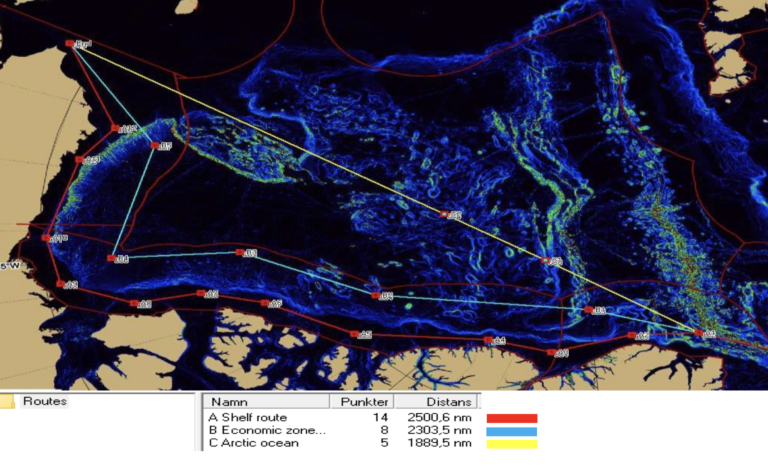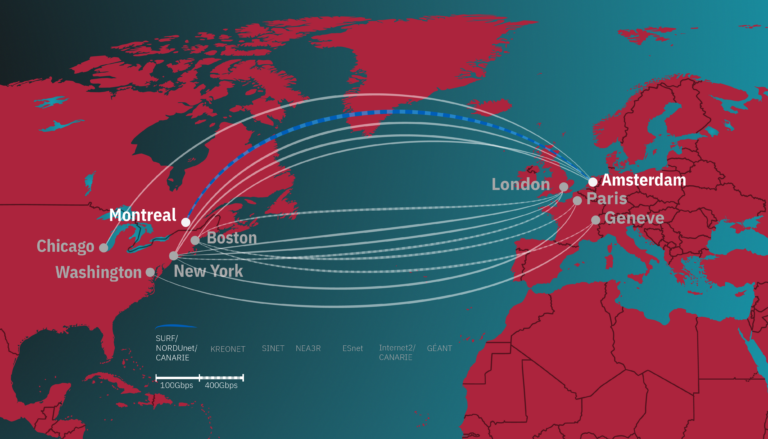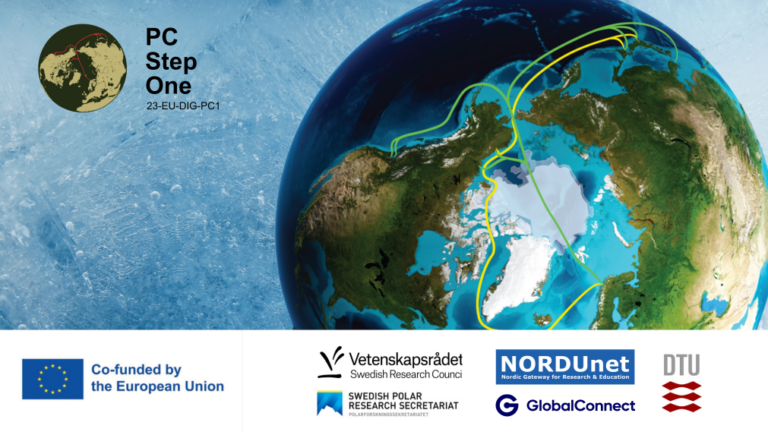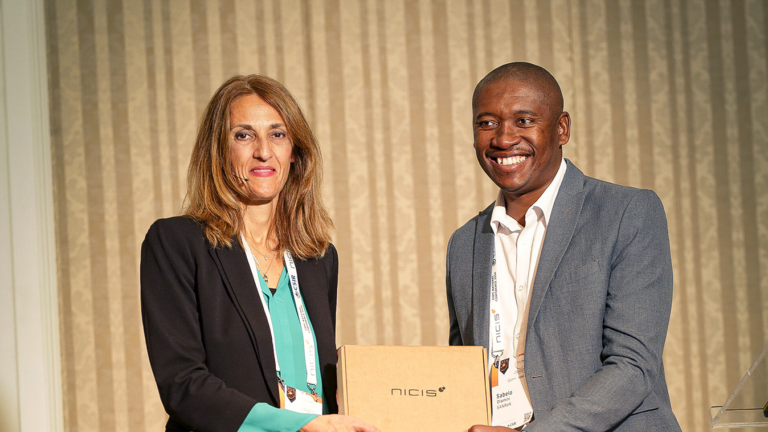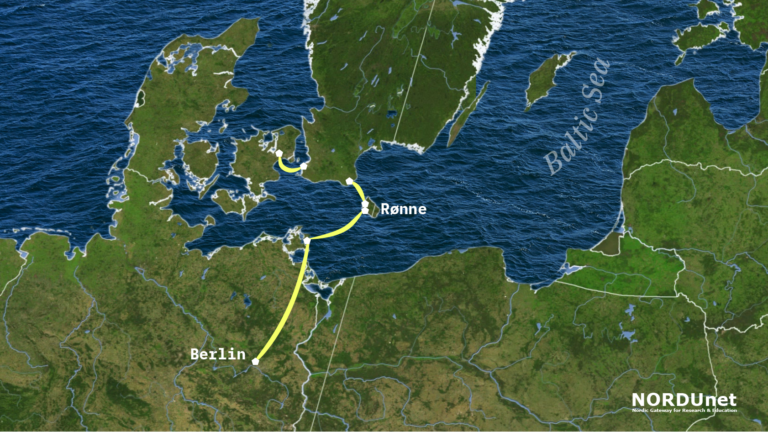A route close to the North Pole through the Western part of the Arctic Ocean will be the most favourable for the Polar Connect subsea cable planned to link Northern Europe to Asia and Northern America. This is a key finding from a study carried out by the Swedish Polar Research Secretariat as part of the Northern EU Gateways project.
Polar Connect is an initiative driven by the Nordic NRENs and NORDUnet. The connection will bring much needed resilience to the digital infrastructure in Europe, and not least Northern Europe. The connection is intended to pass under the ice cap of the North Pole, almost touching Svalbard, and from there North of the Canadian Archipelago, towards North America and East Asia. However, the exact route has not been chosen yet.
The study investigates three alternative routes for Polar Connect, all three in the central Arctic Ocean close to the North Pole.
“The route through the Western part of the Arctic Ocean but close to the North Pole is both the shortest of the three and the one with the least challenging ice conditions,” says Katarina Gårdfeldt, Director at the Swedish Polar Research Secretariat and lead author on the report, underlining that the recommendation is not final:
“The study has not yet included sea bottom data since these are currently unavailable for large parts of the route. Before a decision can be taken on the actual route, several sea bottom profiling campaigns must be carried out.”
North Pole route is top priority
Ideally, sea bottom profiling of all three alternative routes in the central Arctic Ocean should be done. However, since funds are limited and the preliminary recommendation is quite clear, Katarina Gårdfeldt believes that profiling the route through the Western part of the central Arctic Ocean that goes closest to the North Pole of the three will have to suffice.
“Getting funding for sea bottom profiling of the pre-selected route through the central Arctic Ocean close to the North Pole will be our priority. It is unlikely that the profiling will alter the overall choice of route, but it may well lead to modifications. Also, it is simply not possible to place an order for the cable before you know the bottom profile. Else, you wouldn’t know the specifications for the cable.”
Provided that an application for funding is successful, sea bottom profiling campaigns can begin by summer 2025 and are expected to last 3 years. The main application is for EU funds, covering 50 per cent of the campaign costs. Co-funding for the other half of costs will subsequently need to be identified.
Cable can be laid in 39 to 79 days
According to the study, it will be possible to lay an Arctic cable with a speed of 1-2 nautical miles per hour. Since the route through the Western part of the Arctic Ocean closest to the North Pole totals 1,900 nautical miles, this corresponds to laying the cable within 39 to 79 days.
“In other words, there is a good chance for completing the cable-laying campaign during late summer and early autumn when conditions are most favorable. Obviously, that would be highly desirable. However, nothing can be guaranteed when working in the central Arctic Ocean since weather and ice conditions will always be associated with large uncertainty. But with enough funding to do the pre-studies and access to the icebreaker fleet that we present in the study, we have mitigated the risks and will be able to lay the cable,” says Katarina Gårdfeldt.
Another uncertainty is the availability of icebreakers and other vessels able to cope with the harsh conditions. Since ice in the waters near the North Pole can be extremely hard after having survived several seasons of melting and freezing, a complex scheme of ice management must be in place. Using experience from previous campaigns, the Swedish Polar Research Secretariat states that coordinated efforts of at least two very powerful icebreakers will be required.
New heavy vessel is required
If the project was to begin now, the necessary icebreaker capacity would just not be available.
“Only the top Swedish icebreaker Oden of Polar Class 2 is currently of the standard required to be part of the ice management fleet, but she is too weak to be the vessel fronting the ice as the first vessel along the cable laying route,” Katarina Gårdfeldt notes.
However, plans are advanced for commissioning a new vessel, the Swedish Heavy Polar Research Vessel, which among many other purposes will be ideal for the Polar Connect cable laying project.
“I would say that the cable laying project depends on a decision for commissioning the Swedish Heavy Polar Research Vessel,” says Katarina Gårdfeldt.
Besides the two very powerful icebreakers, a cable-laying vessel will of course be required. Since no cable-laying vessels fit for Arctic operation exist, and since it would be very costly to modify existing cable-laying vessels sufficiently, it would realistically be necessary to modify an icebreaker of Polar Class 3 to do the cable-laying. Also, yet another icebreaker of Polar Class 3 should be available for redundancy purposes.
Many question marks have been removed
A Swedish government decision on the Swedish Heavy Polar Research Vessel is expected by late 2024 or early 2025. From sign of contract, manufacture will take at least three years.
“So, realistically the cable laying can take place in 2030, after the new vessel has been delivered and has entered into operation, and the sea bottom profiling has taken place,” Katarina Gårdfeldt sums up.
The fact that several unknown factors are still at play, is not unusual, she notes:
“When we first introduced the idea of Polar Connect crossing the North Pole, many said this would just not be possible. Since then, we have been able to remove many question marks along the road, not least on the technical side. What we need just now is maybe a bit more interest on the commercial side, but my feeling is that more and more stakeholders are beginning to see this as a realistic project and realize the great opportunities it opens both for Europe and Asia.”
The Swedish Polar Research Secretariat report: Cable-laying project from Svalbard to the Bering strait through the Arctic Ocean
Three alternative routes for Polar Connect
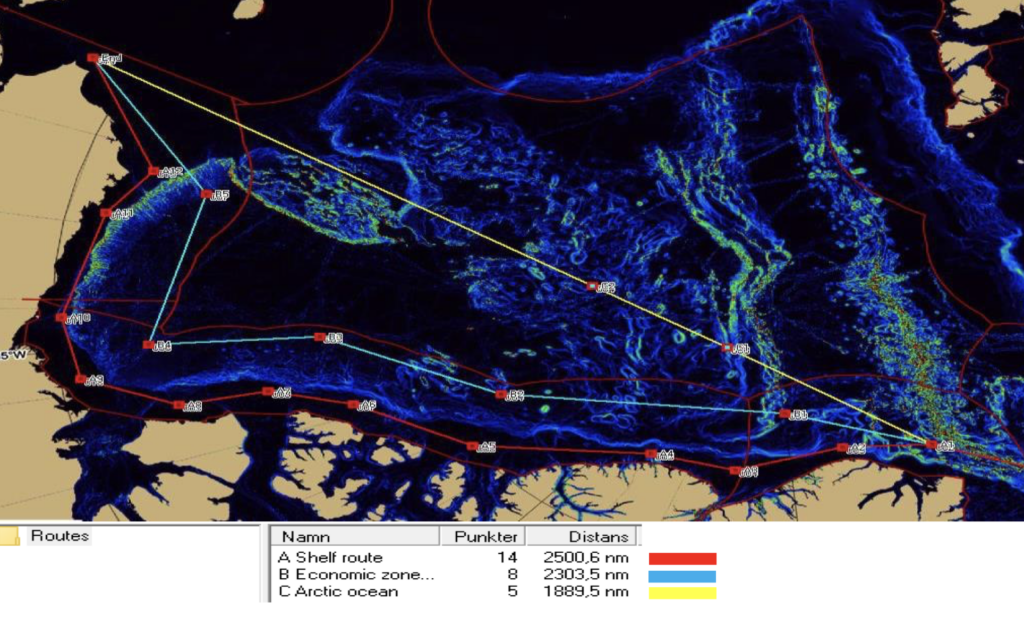
The report analyses three possible routes for Polar Connect. The first route is 2,500 nautical miles and concentrated on the shelves of Greenland, Canada, and the USA. The second route is 2,300 nautical miles within the economic zone of Greenland, Canada, and USA. The last route is 1,900 nautical miles and crosses through the western part of the central Arctic Ocean but close to the North Pole. Besides being the shortest route, the latter alternative also offers the least challenging ice conditions.


